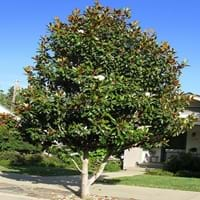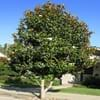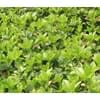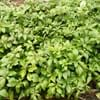Life Span
Perennial
Perennial
Type
Broadleaf Evergreen
Broadleaf Evergreen
Origin
Southeastern United States
China, Japan
Types
Not available
Heavenly Bamboo, Nandina 'Colerno'
Dwarf Nandina 'Compacta'
Dwarf Nandina 'Filamentosa'
Heavenly Bamboo, Nandina 'Harbor Belle'
Heavenly Bamboo, Nandina 'Moon Bay'
Habitat
marshes, Marshy ground, Swamps
low mountains, Mountain tops, Mountains, Valley
USDA Hardiness Zone
6-10
6-11
AHS Heat Zone
Not Available
Not Available
Habit
Pyramidal
Clump-Forming
Flower Color
White
Not Available
Flower Color Modifier
Bicolor
Bicolor
Fruit Color
Red
Not Available
Leaf Color in Spring
Dark Green
Green, Purple, Copper
Leaf Color in Summer
Dark Green
Green, Purple
Leaf Color in Fall
Dark Green
Green, Purple
Leaf Color in Winter
Dark Green
Red, Green, Purple
Leaf Shape
Pyramidal
Acuminate
Plant Season
Spring, Summer, Fall, Winter
Spring, Summer, Fall, Winter
Sunlight
Full Sun, Partial Sun
Full Sun, Partial Sun, Partial shade, Full Shade
Type of Soil
Clay, Loam, Sand
Loam, Sand
The pH of Soil
Acidic, Neutral
Acidic, Neutral, Alkaline
Soil Drainage
Well drained
Well drained
Bloom Time
Early Spring, Spring, Late Spring, Early Summer, Summer, Late Summer
Not Available
Tolerances
Pollution, Drought
Drought
Where to Plant?
Ground, Pot
Ground
How to Plant?
Layering, Semi-ripe cuttings, Softwood cuttings
Seedlings
Plant Maintenance
Low
Medium
Watering Requirements
Provide sufficient water to saturate the root zone, Requires regular watering, Water when soil is dry
Do not water frequently, Needs less watering
In Summer
Less Watering
Lots of watering
In Spring
Drought Tolerant
Moderate
In Winter
Average Water
Average Water
Soil pH
Acidic, Neutral
Acidic, Neutral, Alkaline
Soil Type
Clay, Loam, Sand
Loam, Sand
Soil Drainage Capacity
Well drained
Well drained
Sun Exposure
Full Sun, Partial Sun
Full Sun, Partial Sun, Partial shade, Full Shade
Pruning
Remove damaged leaves, Remove dead branches, Remove dead leaves
Remove damaged leaves, Remove dead branches, Remove dead leaves
Fertilizers
All-Purpose Liquid Fertilizer
All-Purpose Liquid Fertilizer
Pests and Diseases
Birds, Squirrels
Red blotch
Plant Tolerance
Drought
Drought
Flower Petal Number
Single
Not Available
Foliage Texture
Coarse
Fine
Foliage Sheen
Glossy
Glossy
Attracts
Birds, Rabbits, Squirrels
Mealybugs, Whiteflies
Allergy
allergic reaction, Asthma, Runny nose
Not Available
Aesthetic Uses
Beautification, Cottage Garden, Landscape Designing, Showy Purposes
Bonsai, Borders
Beauty Benefits
Anti-ageing, Beautiful Skin, Blood purifying, Treatment of Dark Spots
Not Available
Environmental Uses
Air purification
Air purification
Medicinal Uses
Alzheimer’s Disease, anti-cancer, Anxiety, Asthma, Diabetes, Liver problems, Menstrual Cramps
Antirheumatic, Antitussive, Astringent
Part of Plant Used
Flowers
Fruits, Leaves
Other Uses
Air freshner, Grown for shade
Used for making informal hedge
Used As Indoor Plant
Yes
No
Used As Outdoor Plant
Yes
Yes
Garden Design
Container, Feature Plant, Landscape, Shade Trees, Street Trees
Container, Edging, Foundation, Groundcover, Hedges, Mixed Border, Topiary, Bonsai, Espalier
Botanical Name
MAGNOLIA grandiflora
NANDINA domestica 'Nana Purpurea'
Common Name
Magnolia grandiflora, bull bay
heavenly bamboo
sacred bamboo
nandina
In Hindi
Magnolia grandiflora
Dwarf Nandina
In German
Immergrüne Magnolie
Dwarf Nandina
In French
Magnolia à grandes fleurs
Nandina Dwarf
In Spanish
Magnolia grandiflora
Nandina enana
In Greek
Magnolia grandiflora
Dwarf Nandina
In Portuguese
Magnólia-branca
Nandina do anão
In Polish
Magnolia wielkokwiatowa
Dwarf Nandina
In Latin
Magnolia grandiflora
Dwarf Nandina
Phylum
Magnoliophyta
Tracheophyta
Class
Magnoliopsida
Magnoliopsida
Order
Magnoliales
Ranunculales
Family
Magnoliaceae
Berberidaceae
Clade
Angiosperms, Magnoliids
Angiosperms, Eudicots
Tribe
Not Available
Not Available
Subfamily
Magnolioideae
Not Available
Number of Species
Not Available
Season and Care of Southern Magnolia and Dwarf Nandina
Season and care of Southern Magnolia and Dwarf Nandina is important to know. While considering everything about Southern Magnolia and Dwarf Nandina Care, growing season is an essential factor. Southern Magnolia season is Spring, Summer, Fall and Winter and Dwarf Nandina season is Spring, Summer, Fall and Winter. The type of soil for Southern Magnolia is Clay, Loam, Sand and for Dwarf Nandina is Loam, Sand while the PH of soil for Southern Magnolia is Acidic, Neutral and for Dwarf Nandina is Acidic, Neutral, Alkaline.
Southern Magnolia and Dwarf Nandina Physical Information
Southern Magnolia and Dwarf Nandina physical information is very important for comparison. Southern Magnolia height is 610.00 cm and width 300.00 cm whereas Dwarf Nandina height is 30.00 cm and width 60.00 cm. The color specification of Southern Magnolia and Dwarf Nandina are as follows:
Southern Magnolia flower color: White
Southern Magnolia leaf color: Dark Green
Dwarf Nandina flower color: Not Available
- Dwarf Nandina leaf color: Green, Purple and Copper
Care of Southern Magnolia and Dwarf Nandina
Care of Southern Magnolia and Dwarf Nandina include pruning, fertilizers, watering etc. Southern Magnolia pruning is done Remove damaged leaves, Remove dead branches and Remove dead leaves and Dwarf Nandina pruning is done Remove damaged leaves, Remove dead branches and Remove dead leaves. In summer Southern Magnolia needs Less Watering and in winter, it needs Average Water. Whereas, in summer Dwarf Nandina needs Lots of watering and in winter, it needs Average Water.





